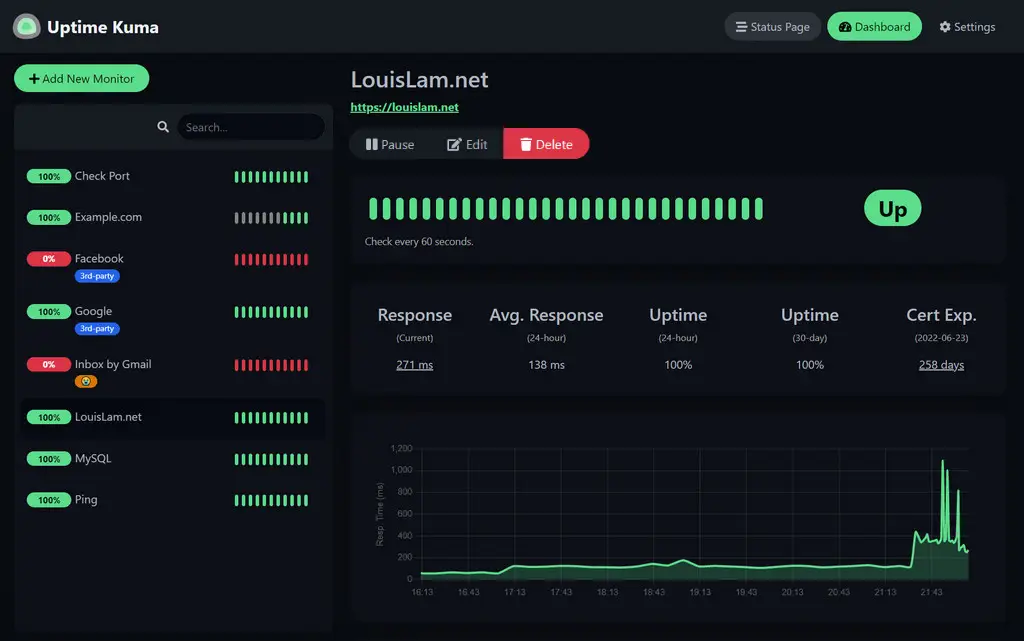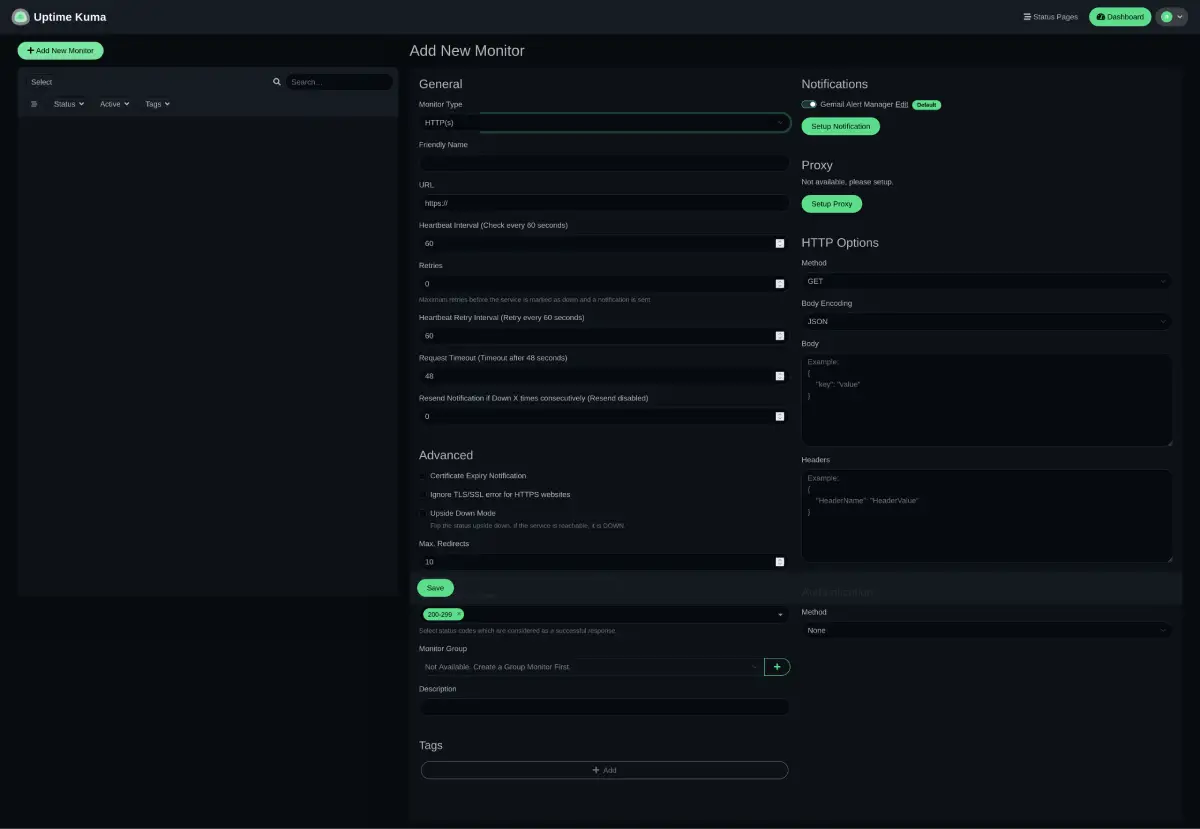Introduction
With the increase in services, maintenance becomes challenging. How to ensure your servers are working properly? You can set up an additional server specifically to monitor the status of other servers, and Uptime Kuma is an open-source, free monitoring tool.
Before installation, you can try out the official demo server to create an instance, it will be destroyed in 10 minutes automatically.

Install Uptime Kuma Using Docker
The official documentation provides options for manual installation and Docker. Since this is a simple service, I will deploy it on Zeabur, a platform-as-a-service. The operations across different platforms should be quite similar.
docker run -d --restart=always -p 3001:3001 -v uptime-kuma:/app/data --name uptime-kuma louislam/uptime-kuma:1- Use the official Docker Image - louislam/uptime-kuma to deploy on the platform.
- Set
/app/dataasvolumesto store permanent data, and open the default3001 portto the outside. - Access the webpage to register account.
Set Up Your First Monitor
Uptime Kuma supports various types of monitoring. For example, with HTTP(s), you can set the frequency of pings, timeout acceptance ranges, payload parameters, etc. If unexpected results occur, you can choose from over 90 different notify services.

For me, email notifications are the most efficient, so I reviewed some other articles: A Complete Guide to Monitoring With Uptime Kuma, and retrieved a password from Google App Password to fill in the necessary settings:

You only need to set it once, and future different events can also utilize the previously configured notifications.
Conclusion
For simple monitoring, Uptime Kuma is a lightweight and feature-rich tool. I use it to monitor all external services to ensure I can promptly address any issues or disturbances, making it a simple yet effective tool and the first step in launching monitoring services.